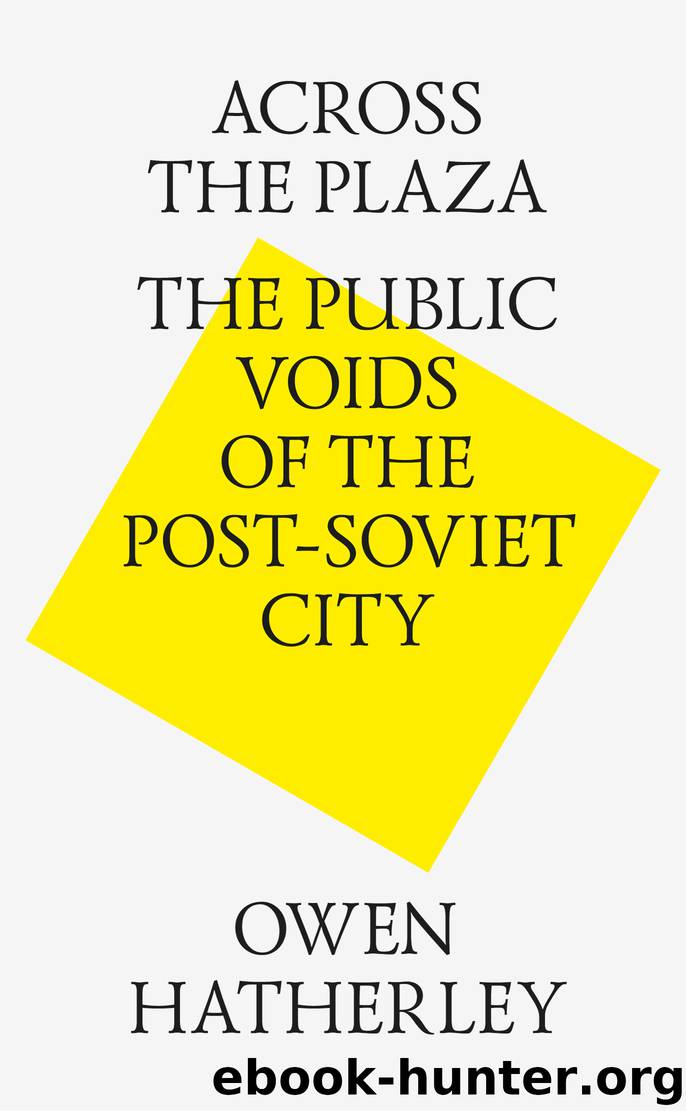Across the plaza. the public voids of the post-soviet city by Owen Hatherley

Author:Owen Hatherley
Language: eng
Format: epub
ISBN: 9785990336445
Publisher: Strelka Press
Published: 2014-02-20T16:00:00+00:00
Spodek and the Monument to Silesian Uprisings, Katowice
Square of The Industrial Metropolis
RYNEK, KATOWICE
Poland is a polycentric country. Unlike, say, the UK, where London is over four times the size of Birmingham, its nearest competitor, or, closer to home, Russia, where provincial centres empty and Moscow becomes ever more gigantic and dominant, it has multiple ‘capitals’. Warsaw is the seat of government and finance, but it is forced to coexist with the similar-sized cities of Krakow, Poznan, Wroclaw, the Tricity of Gdansk, Sopot and Gdynia, and the conurbation of Silesia. In terms of urban area rather than official city boundaries, the largest city in Poland is in fact Katowice, the centre of the Silesian industrial conurbation. This has been acknowledged at local government level, with Katowice and its surrounding towns run as one Silesian Metropolis; there were brief attempts to rename the whole thing Silesia, as if one city. If this conurbation, itself multicentric, has a civic centre, it is the Rynek in the middle of Katowice, which is, very nearly, the dramatic, proud, instantly memorable centre this industrial behemoth deserves; though it is hard to imagine it surviving for long in its present form.
Rynek means market square, and is also the name of a more famous square in nearby Krakow, a historic, ‘authentic’ civic space that is everything the contemporary town planner could possibly desire. It contains a Renaissance market hall, a Gothic guildhall and basilica, pavement cafés and horses and carts for the tourists. The similarity in nomenclature is usually not considered to reflect well on Katowice. The Silesian metropolis is based on coal and steel, much as it ever was; it actually stretches outside Poland altogether into the Czech Republic, where the city of Ostrava provides a similarly sprawling, polycentric, industrial form of urbanism. But walk around the centre of Ostrava on a Saturday and you’ll find something considerably more desolate than Katowice on a Sunday. There’s a short answer to this conundrum — Ostrava closed its mines, Katowice did not, and so maintains a liveliness that is deeply unusual in a Central European industrial city. There is little celebration of this fact — efforts at ‘regeneration’ seem to consist in the usual creative-class courting, plus a frankly bizarre attempt to sell this dense, smoky, teeming place as a ‘city of gardens’. All the same, this is one of the more optimistic-feeling of these spaces.
The Rynek is officially just a roundabout, but it can be conceptualised more as something that gradually overtakes a typical late-nineteenth-century industrial town and propels it into space. Under the railway bridge, a dense town plan suddenly opens out into something much wider. The trams pass between landscaped public plazas — the streetscape was clearly still Wilhelmine at some point (the city was part of the Prussian Empire, and has been both Kattowitz and Stalinogrod in its history). Big, spiky, wilfully grotesque redbrick commercial palaces and offices surround the roundabout on the site of the original, small-town Rynek that once stood here. Marvellously
Download
This site does not store any files on its server. We only index and link to content provided by other sites. Please contact the content providers to delete copyright contents if any and email us, we'll remove relevant links or contents immediately.
Kathy Andrews Collection by Kathy Andrews(10509)
The remains of the day by Kazuo Ishiguro(7543)
Spare by Prince Harry The Duke of Sussex(4188)
Paper Towns by Green John(4165)
The Body: A Guide for Occupants by Bill Bryson(3791)
Be in a Treehouse by Pete Nelson(3206)
Harry Potter and the Goblet Of Fire by J.K. Rowling(3025)
Goodbye Paradise(2950)
Never by Ken Follett(2873)
Into Thin Air by Jon Krakauer(2695)
The Remains of the Day by Kazuo Ishiguro(2614)
The Genius of Japanese Carpentry by Azby Brown(2602)
The Cellar by Natasha Preston(2592)
Drawing Shortcuts: Developing Quick Drawing Skills Using Today's Technology by Leggitt Jim(2529)
120 Days of Sodom by Marquis de Sade(2428)
Architecture 101 by Nicole Bridge(2348)
The Man Who Died Twice by Richard Osman(2290)
Machine Learning at Scale with H2O by Gregory Keys | David Whiting(2267)
Fairy Tale by Stephen King(2058)
